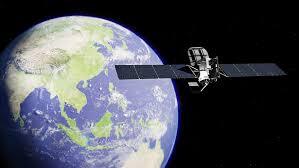
- July-13-2023
Astranis, a San Francisco-based company, has taken a unique approach to provide internet access through satellites. Recently, they secured a groundbreaking deal to offer dedicated service to the Philippines, making it the first time such a service will be available in the archipelago nation. The CEO of Astranis, John Gedmark, expressed his excitement about the opportunity, stating that they estimate connecting up to 2 million people who previously lacked broadband internet access. This new capacity will be used to connect essential institutions like hospitals and schools, as well as establish community Wi-Fi centers. Astranis aims to bridge the digital divide and bring service to underserved communities worldwide. In addition to the Philippines, they have already launched a small satellite in Alaska, catering to hundreds of thousands of people, and have plans for another satellite to provide service to 3 million people in Peru. Astranis will own and operate the satellite serving the Philippines, with services provider Orbits Corp. purchasing capacity through a long-term contract with a local Philippine internet service provider, HTechCorp. Although financial details were not disclosed, Gedmark emphasized that the service would be offered at a very low cost. Broadband service has been a major challenge in the Philippines, with its population of over 100 million residing on more than 7,000 islands, many of which are mountainous. Astranis cited a third-party study indicating that bringing broadband access to the country could generate economic value exceeding $100 billion by the end of the decade. The satellite dedicated to the Philippines is scheduled to launch in 2024. Astranis has already launched its first satellite and is preparing to launch additional batches known as "Block 2" and "Block 3," with each block featuring multiple satellites, including those for Peru and the Philippines. While various companies, such as SpaceX's Starlink, OneWeb, Amazon's Project Kuiper, and AST SpaceMobile, are developing next-generation broadband satellite systems, Astranis stands out with its unique combination of a small satellite size similar to Starlink's in low Earth orbit and the geosynchronous orbit used by traditional players like Viasat. The geosynchronous orbit, located approximately 22,000 miles above the Earth's surface, enables the satellite to remain fixed in one position relative to the planet's rotation. Gedmark highlighted that Astranis' satellite would cover the entire Philippines, providing comprehensive coverage for the nation.









